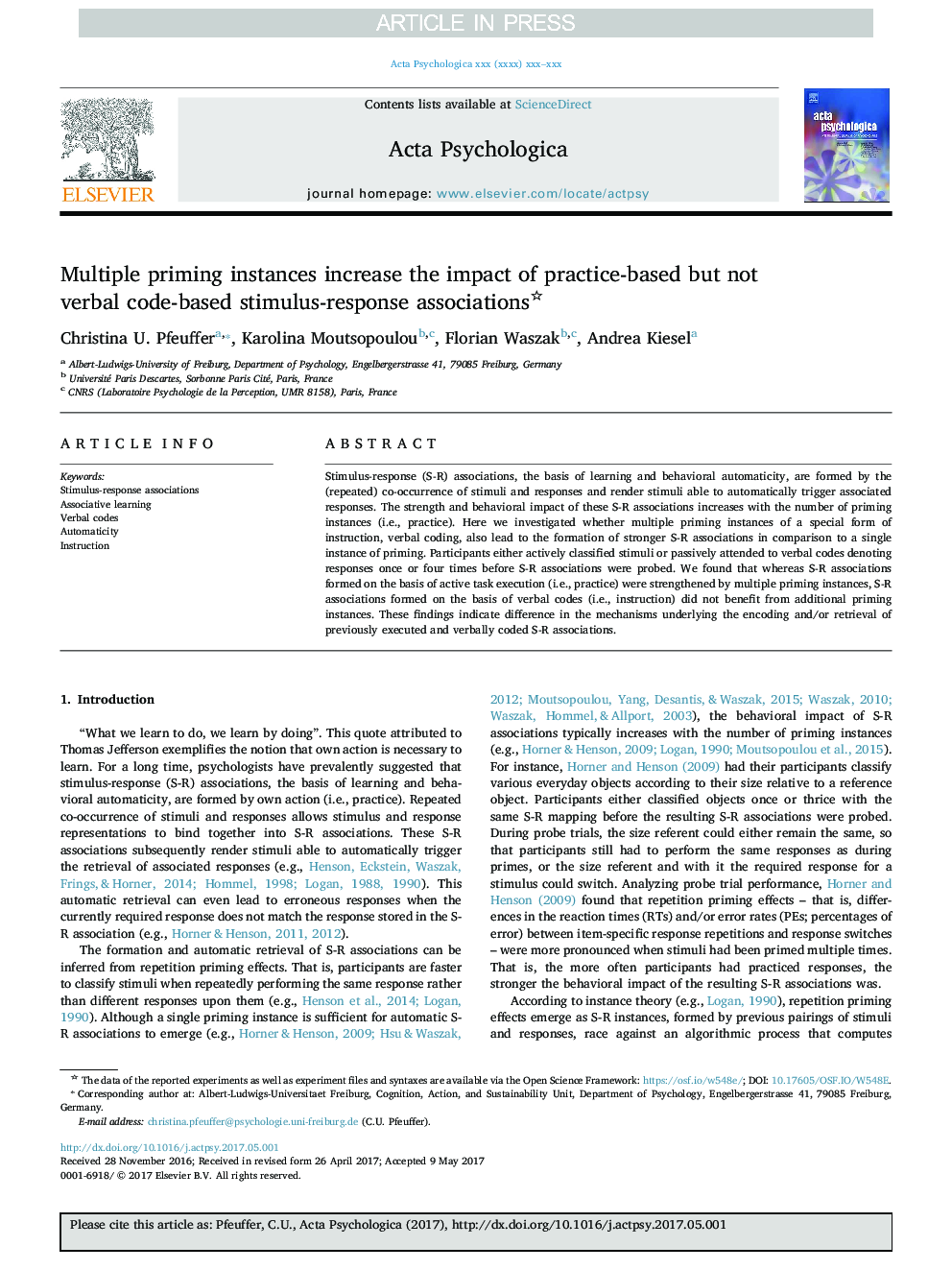| Article ID | Journal | Published Year | Pages | File Type |
|---|---|---|---|---|
| 7276807 | Acta Psychologica | 2018 | 10 Pages |
Abstract
Stimulus-response (S-R) associations, the basis of learning and behavioral automaticity, are formed by the (repeated) co-occurrence of stimuli and responses and render stimuli able to automatically trigger associated responses. The strength and behavioral impact of these S-R associations increases with the number of priming instances (i.e., practice). Here we investigated whether multiple priming instances of a special form of instruction, verbal coding, also lead to the formation of stronger S-R associations in comparison to a single instance of priming. Participants either actively classified stimuli or passively attended to verbal codes denoting responses once or four times before S-R associations were probed. We found that whereas S-R associations formed on the basis of active task execution (i.e., practice) were strengthened by multiple priming instances, S-R associations formed on the basis of verbal codes (i.e., instruction) did not benefit from additional priming instances. These findings indicate difference in the mechanisms underlying the encoding and/or retrieval of previously executed and verbally coded S-R associations.
Related Topics
Life Sciences
Neuroscience
Cognitive Neuroscience
Authors
Christina U. Pfeuffer, Karolina Moutsopoulou, Florian Waszak, Andrea Kiesel,
